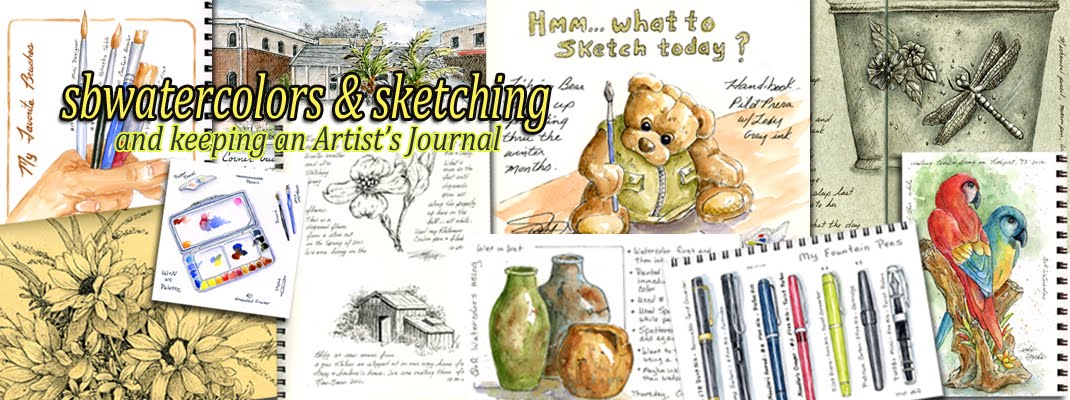Sketch following a photo leaving out a few elements like a large tree in front blocking part of the barn.
Daniel Smith pigments - Cerulean Blue, Cobalt Blue, Bt Sienna, Bt Umber, Indigo, Quin Burnt Orange, Quin Gold and a touch of Sap Green.
#8 Round and 3/8" Angular Flat
Pilot Prera pen with Lexington Gray ink
Note: Was a bit disappointed in my scan. My scanner doesn't like Cerulean Blue unless applied in heavy applications; and has trouble picking up the Bt Sienna properly (at least the Daniel Smith pigment). I tried to fix in Photoshop Elements but was only able to get close..........not exact to the color.
Here is a video trying YouTube and MP4 format I hope shows on most platforms. I have no idea who can or cannot view this video or what YouTube does with an upload and formatting.
The video shows how I first apply water to the area using an angular flat. I use this brush as I can better control the amount of water.....plus for wood, I just like the use of a flat edge versus the round brush.
Using various combination mixes of Ultramarine Blue and Burnt Sienna, I make vertical strokes wet in wet.
First layer is more of a gray allowing the area to dry or almost dry before carefully adding brush strokes of plain water again (I don't want to lift the first layer of pigment). Then brushing on another mix leaning more towards the Burnt Sienna taking care not to completely cover white paper I left in first layer or color first applied.
Video also shows how I place the shadow under the roof line softening some of the edges with the corner of the angular flat as well as some pen and ink work in a couple areas of the roof.
After all dries, I add additional brush strokes wet on dry (I do NOT pre-wet the paper with water at this point) working quickly so I can rinse brush, dab on paper towel and then soften edges to help blend paint strokes with previous layers. In this case I brushed on a mix of Burnt Sienna allowing it to dry or "set" and then a little Quin Gold to brighten an area. I could have gone a bit stronger with the Quin Gold but I didn't want to overwork the example. Best be safe than sorry :-))
Rest of this clip just shows where I added a few grassy clumps at the base of the barn and added a few more lines to the wood area.
NOTE: The video appears I went from one step to the next without stopping. I allow to dry or near dry between steps or layers as explained above. I need to learn how to add captions and will work on that for possible future videos.




















